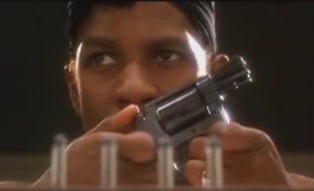 In the midst of heated gun control debate on Capitol Hill, Florida Atlantic University researchers say one startling statistic is going unnoticed. Homicide is the number one killer of young Black men.
In the midst of heated gun control debate on Capitol Hill, Florida Atlantic University researchers say one startling statistic is going unnoticed. Homicide is the number one killer of young Black men.
"Mortality from homicide among young Black men is killing more young Black men than all other causes put together," says Dr. Charles H. Hennekens, a professor at the Charles E. Schmidt College of Medicine at FAU. "This is in dire contrast to young Black women, White women, young White women, young White men, whose chief cause of death is accidents."
In fact, he says that homicides among Black men ages 15 to 24 accounted for more deaths than unintentional injuries, suicide, cancer, HIV and other diseases combined. In a recent commentary in the American Journal of Medicine, entitled "A New American Tragedy," Hennekens asserts that there needs to be more research on this disparity.
"Our main message is to try to get researchers and policymakers to understand that this is a huge public health problem that hasn't been explored," he says.
Organizations within the Black community have been discussing this for years but the conversation rarely gets mainstream attention. The Malcolm X Grassroots Movement published a report last year, stating Black people are the victims of extrajudicial murders every 40 hours (it was recently updated to 36), following the killing of teenager Trayvon Martin.
In terms of Black on Black homicide rates, many link this phenomenon with the Willie Lynch Letter, which dates back to slavery and instructs slave masters to create distrust amongst slaves in order to control their minds. During a 2001 interview on BET, former Los Angeles gang member and author Sanyika Shakur described this self-hatred as a sickness in the community.
| Part of the Willie Lynch Letter, as quoted in The Final Call, reads, "I HAVE OUTLINED A NUMBER OF DIFFERENCES AMONG THE SLAVES; AND I TAKE THESE DIFFERENCES AND MAKE THEM BIGGER. I USE FEAR, DISTRUST AND ENVY FOR CONTROL PURPOSES. These methods have worked on my modest plantation in the West Indies and it will work throughout the South. Take this simple little list of differences and think about them. On top of my list is "AGE," but it's there only because it starts with an "a." The second is "COLOR" or shade. There is INTELLIGENCE, SIZE, SEX, SIZES OF PLANTATIONS, STATUS on plantations, ATTITUDE of owners, whether the slaves live in the valley, on a hill, East, West, North, South, have fine hair, course hair, or is tall or short. Now that you have a list of differences, I shall give you an outline of action, but before that, I shall assure you that DISTRUST IS STRONGER THAN TRUST AND ENVY STRONGER THAN ADULATION, RESPECT OR ADMIRATION. The Black slaves after receiving this indoctrination shall carry on and will become self-refueling and self-generating for HUNDREDS of years, maybe THOUSANDS." |
Hennekens points to firearms related deaths for specific examination. Citing data from the publically available Centers for Disease Control and Prevention database, he says it's not just a problem for young Black men. The overall rates of homicide in the U.S. are seven times higher than they are in other developed countries and the rates from firearms are 20 times higher. Even in the young age groups, the mortality rates from firearms are 43 times higher, says Hennekens.
"Combating the epidemic of mortality due to firearms without addressing firearms is analogous to combating the epidemic of lung cancer due to cigarettes without addressing cigarettes," he says. "There have been a lot of emotions that are very high on both sides of this question and I think we need more reliable evidence as soon as possible.
"We want to optimize the health of the public, we want to look at the existing evidence and do the research necessary to test the questions and weigh that in view of the constitutional right of individuals to bear arms."
Hennekens says he's glad that academic medical research will play a role in the national plan to reduce mortality from firearms. Medical centers should be a central part of the research to prevent these occurrences, instead of just being the institutions that delivery of care, he says.
"I think it was Mark Twain who said, 'You can always tell when academics are in dispute because the emotions are high and the stakes are low,'" says Hennekens. "Well here, the emotions are high and the stakes are high but we have an absence of a sufficient body of evidence on which to make the best judgments on what to do."














































































































































































































































































































